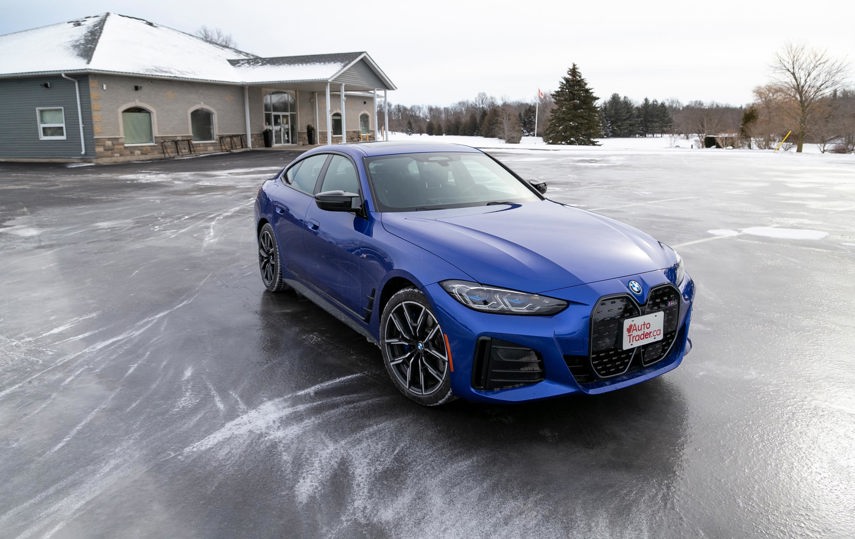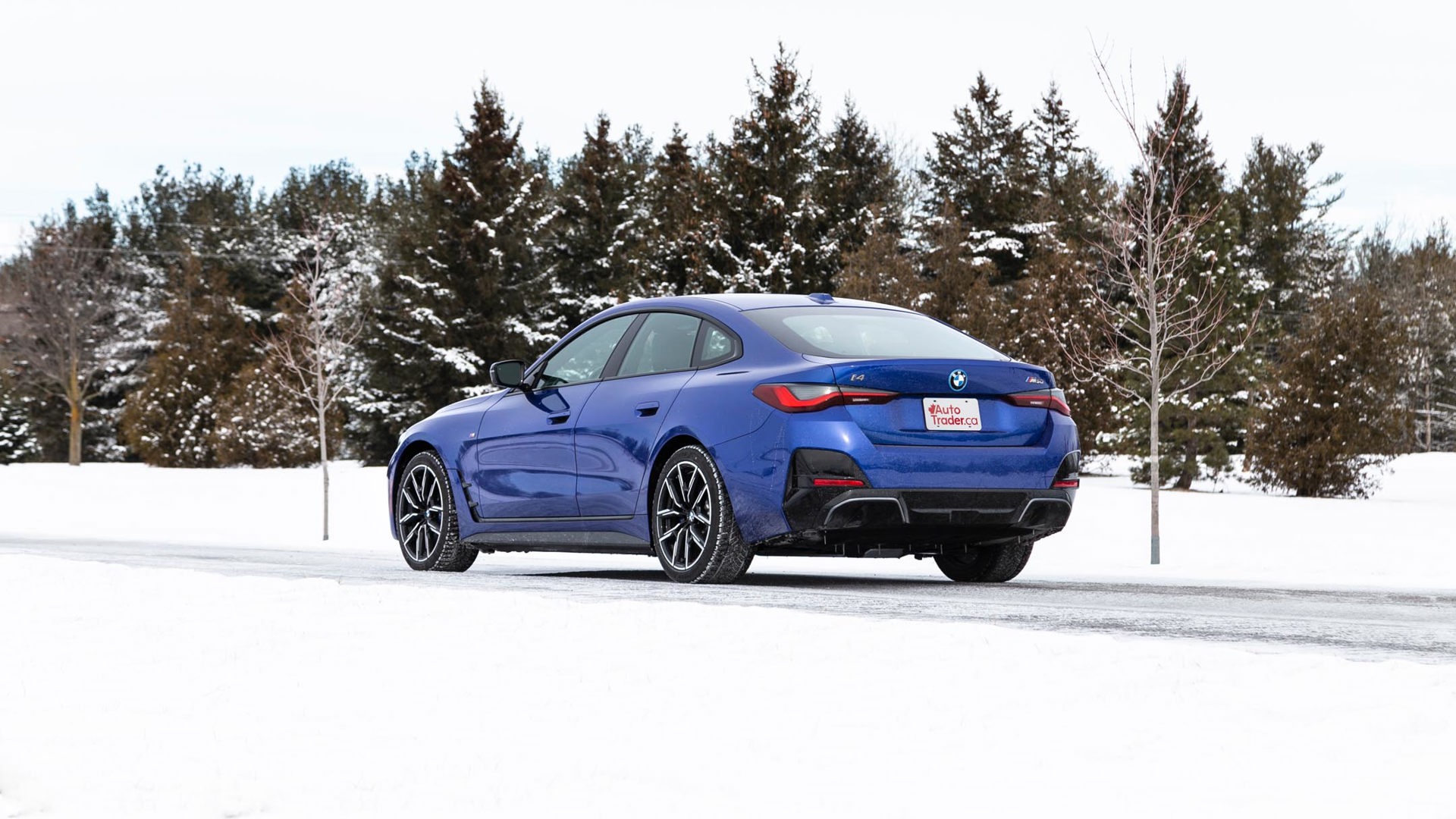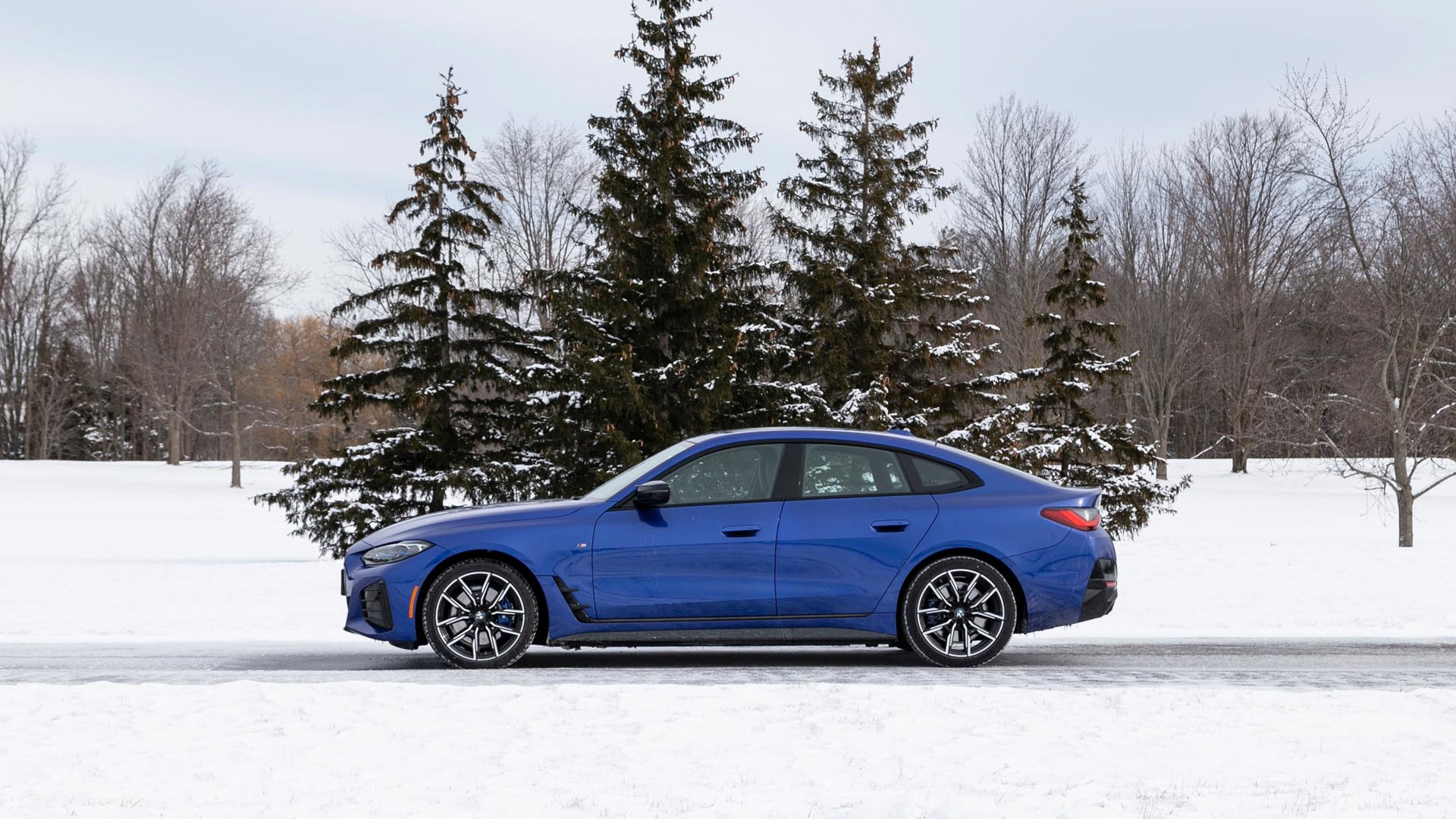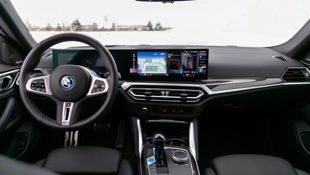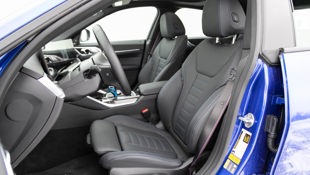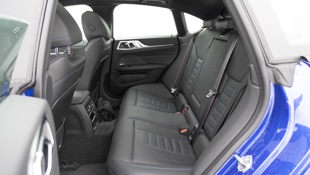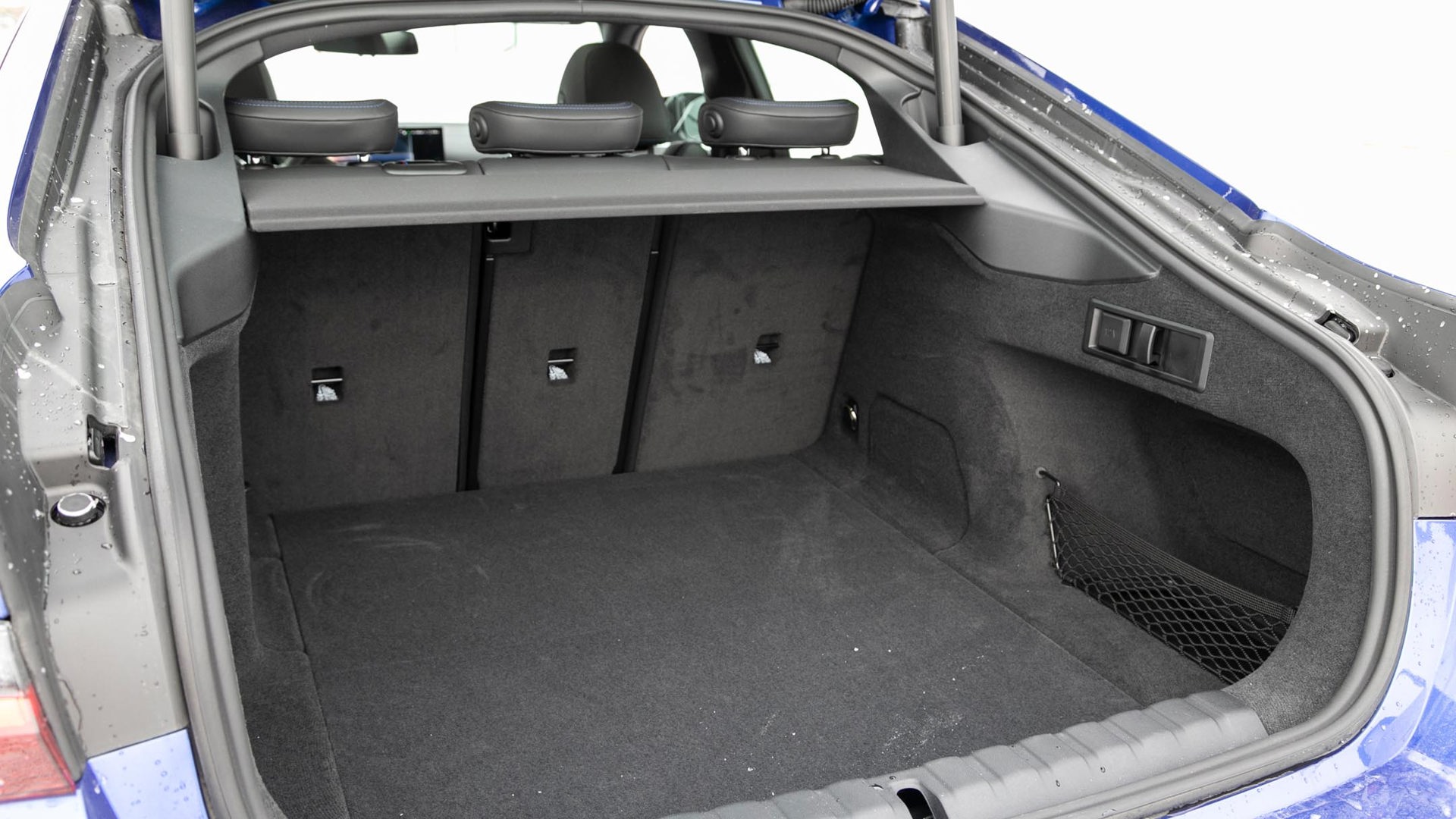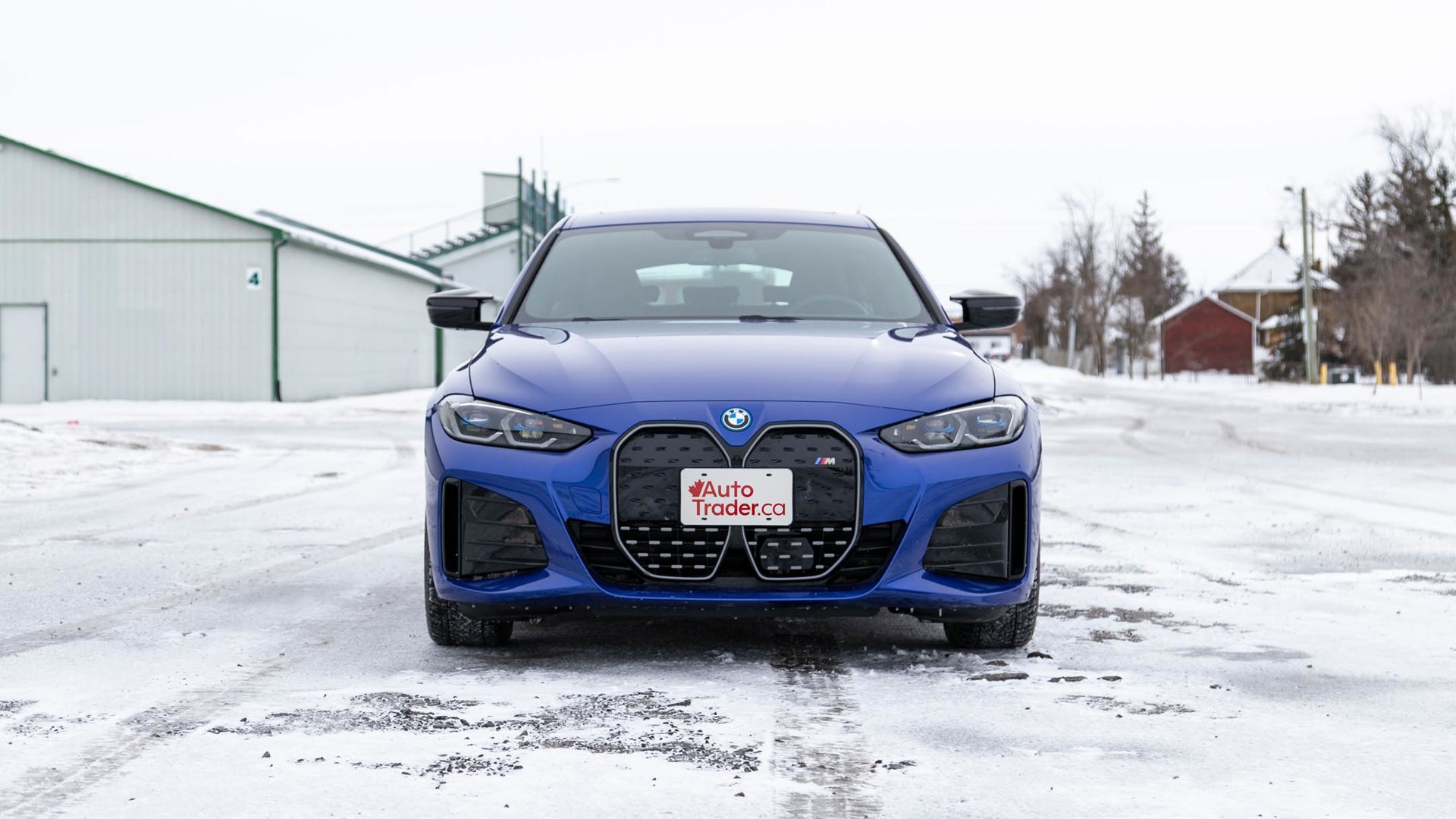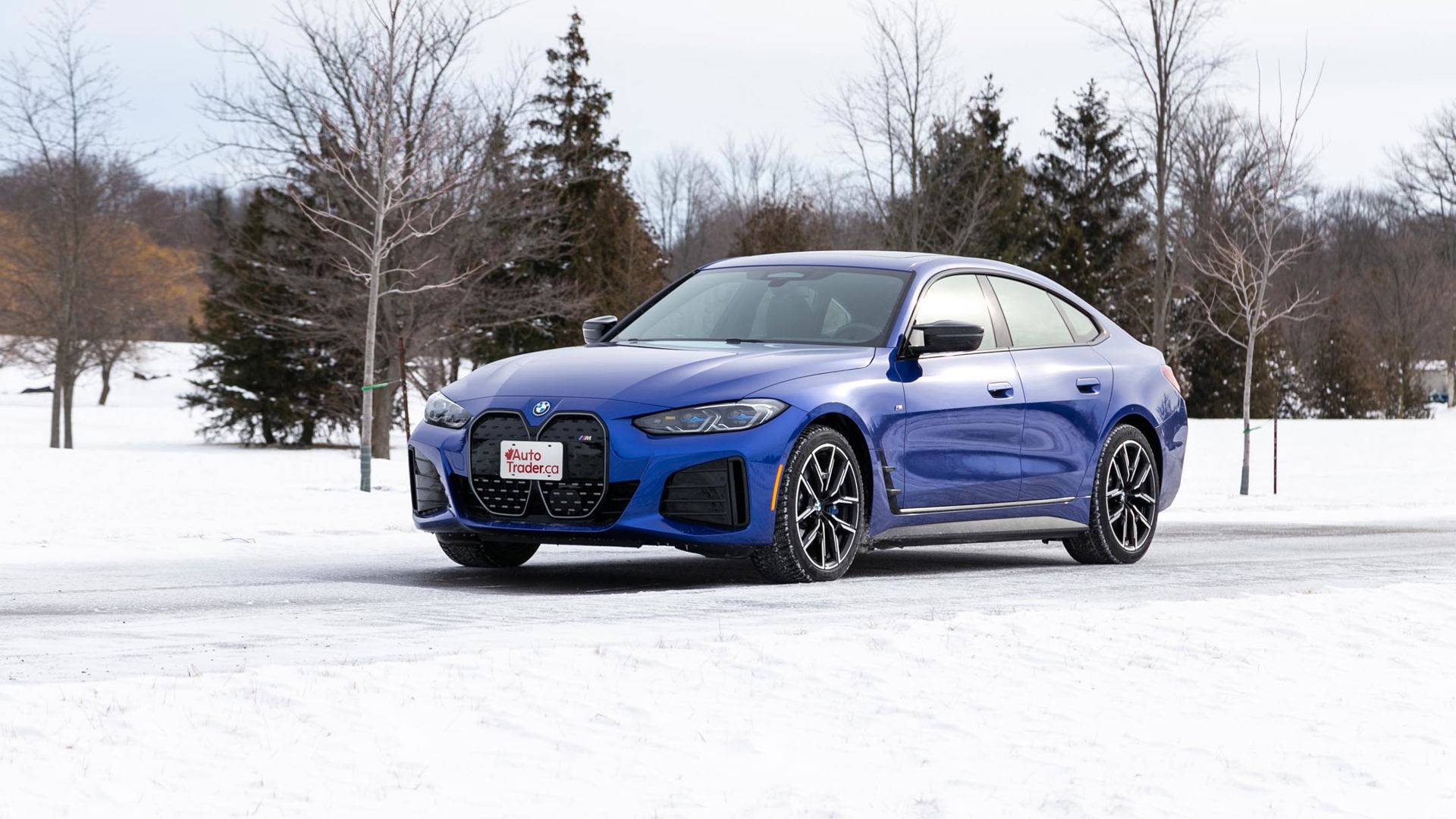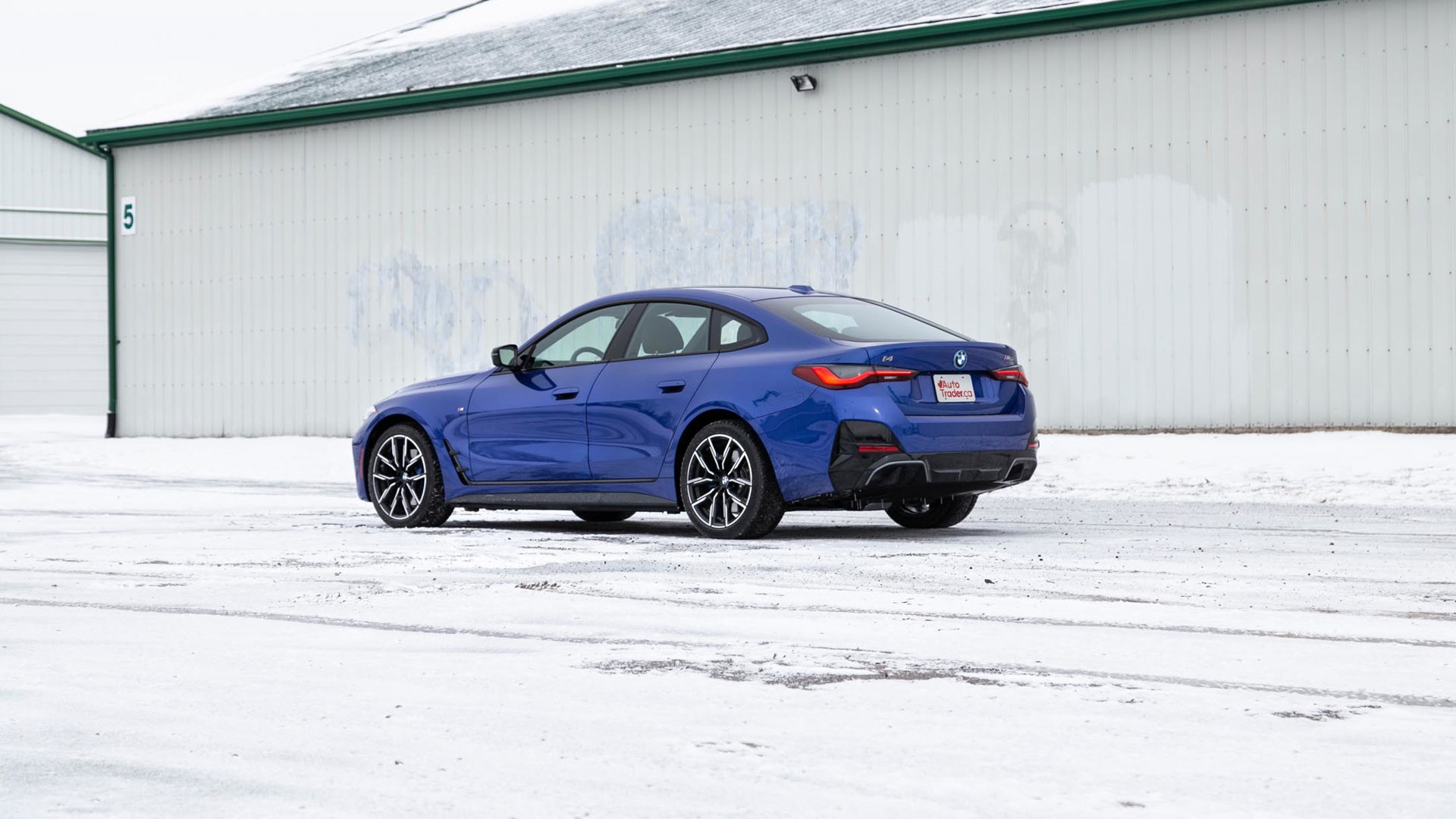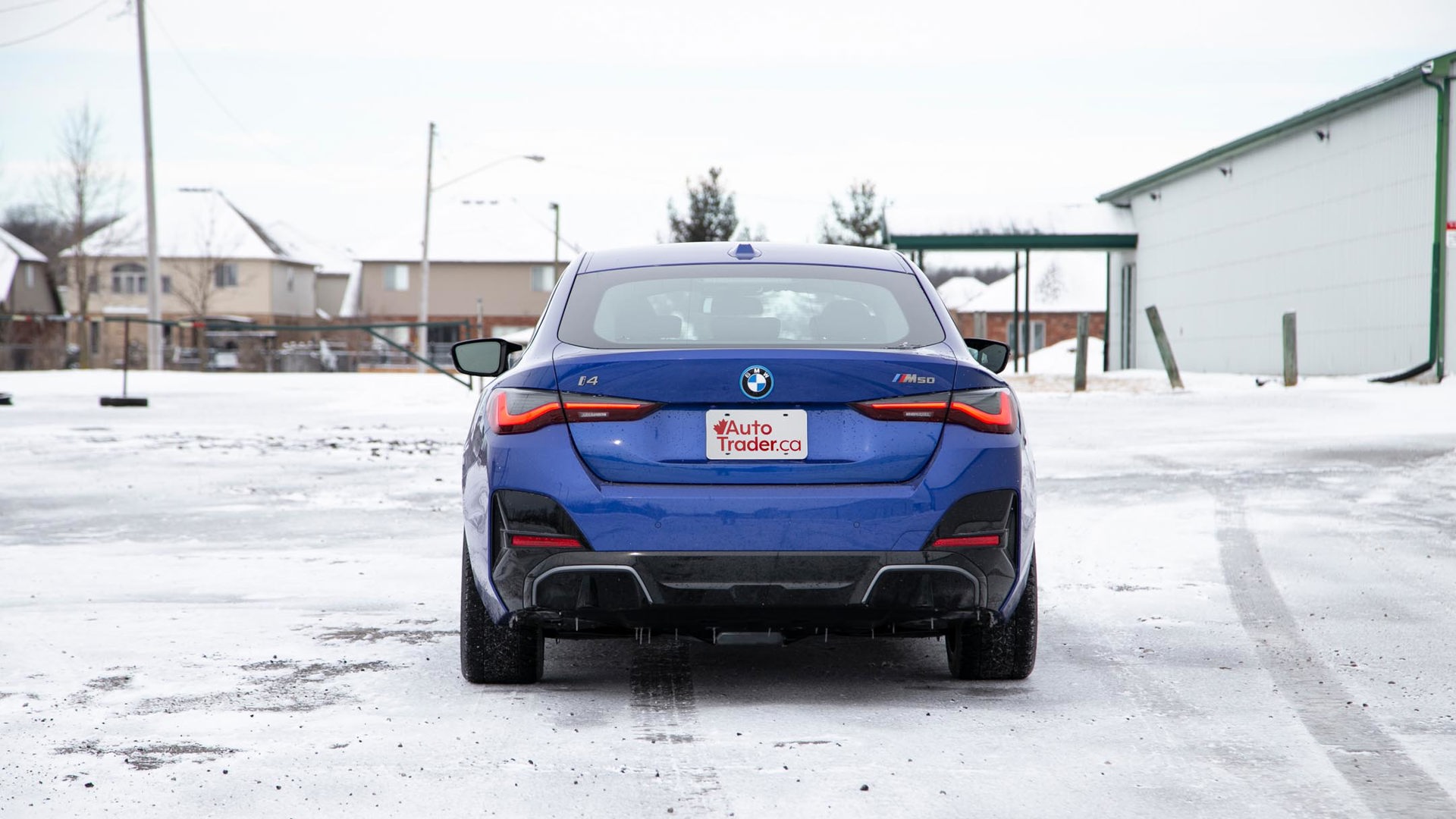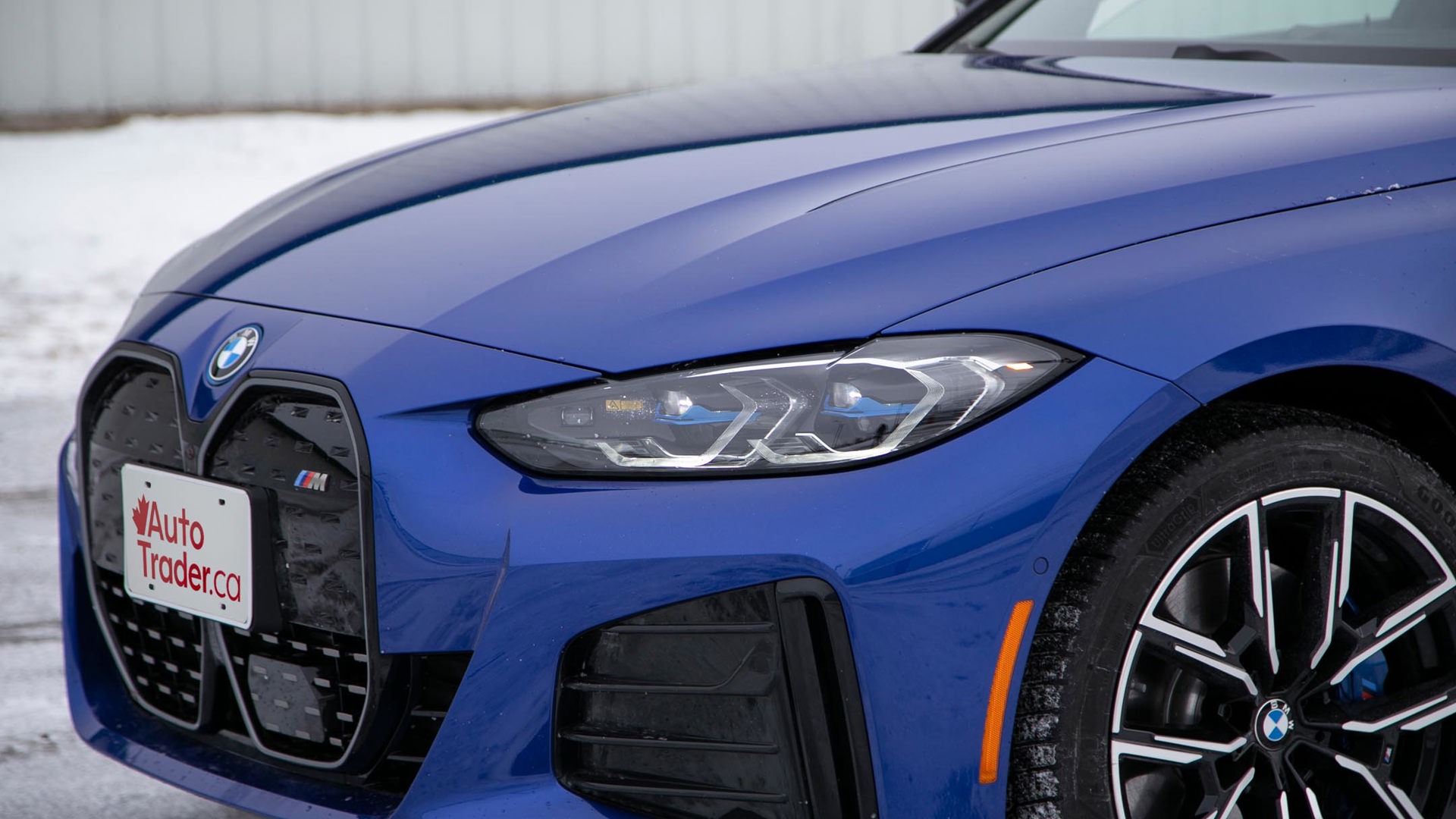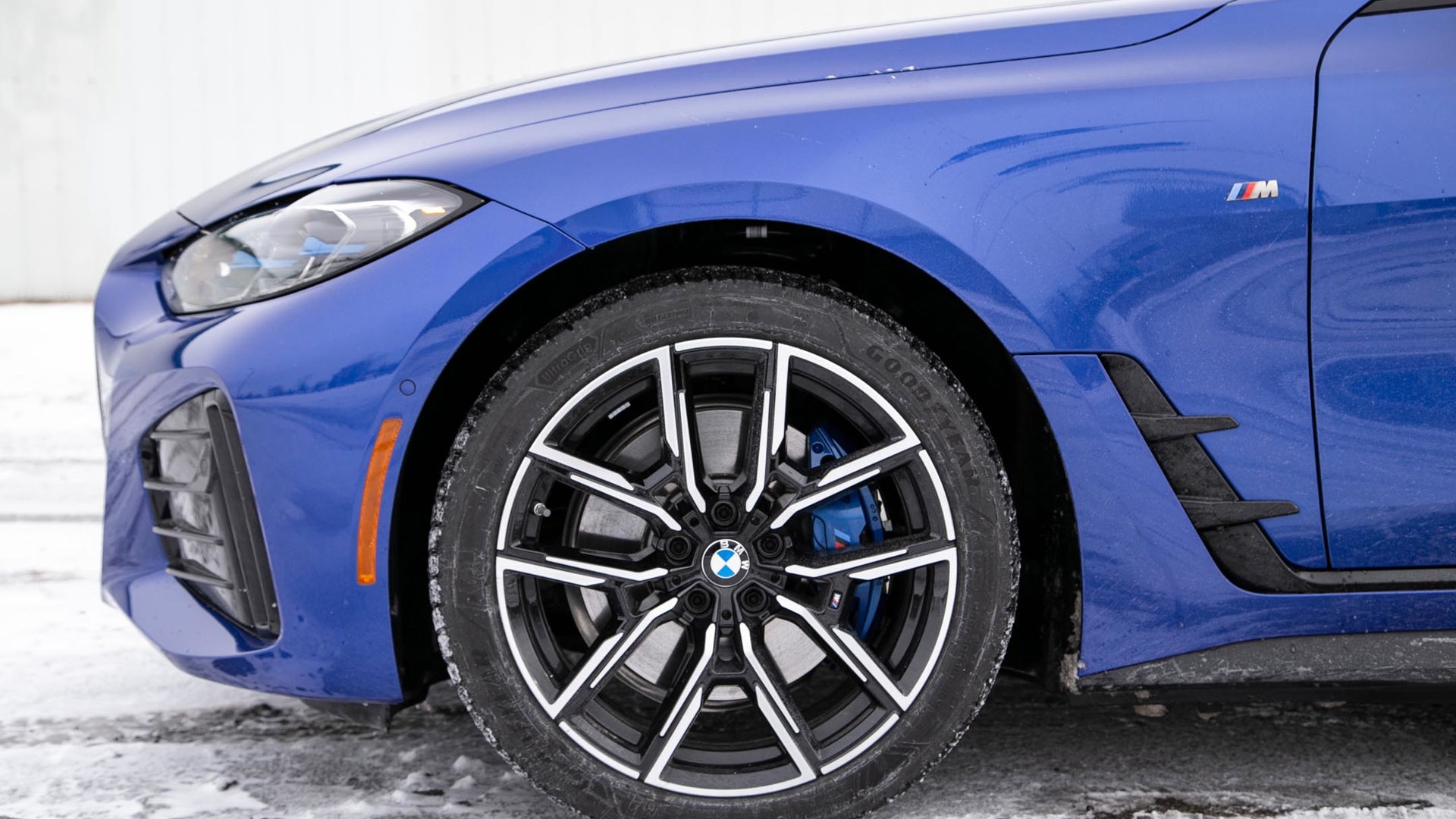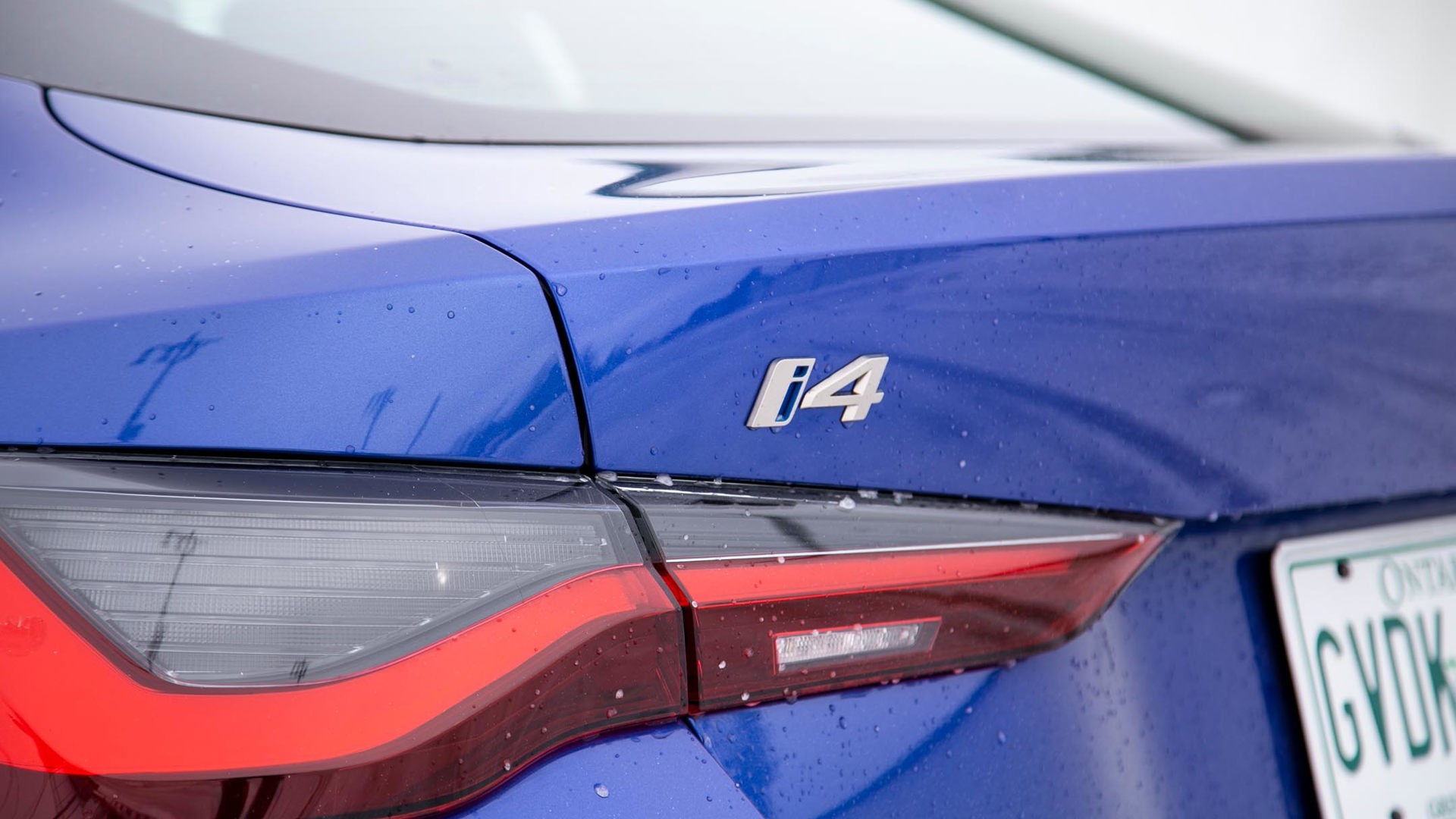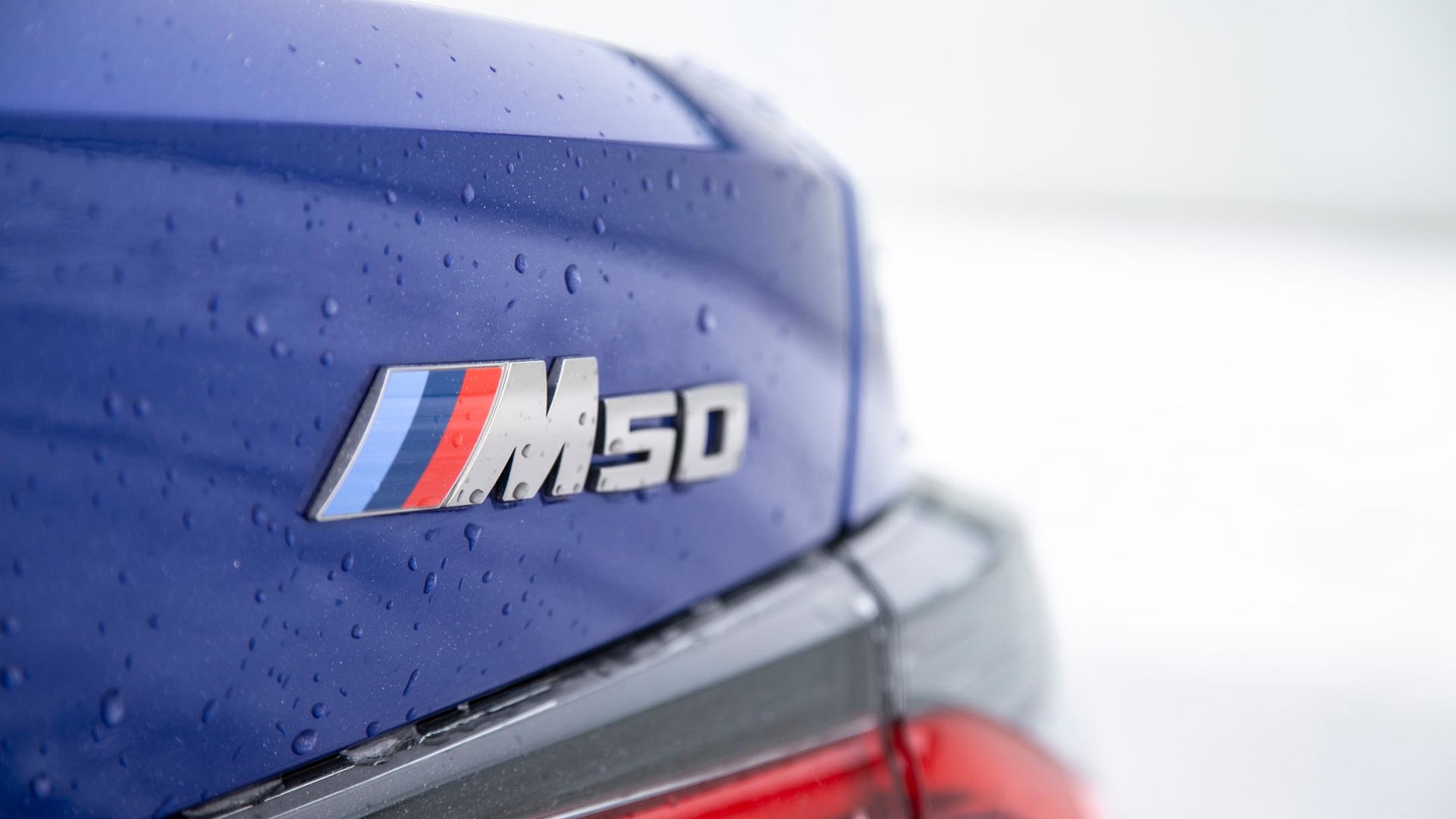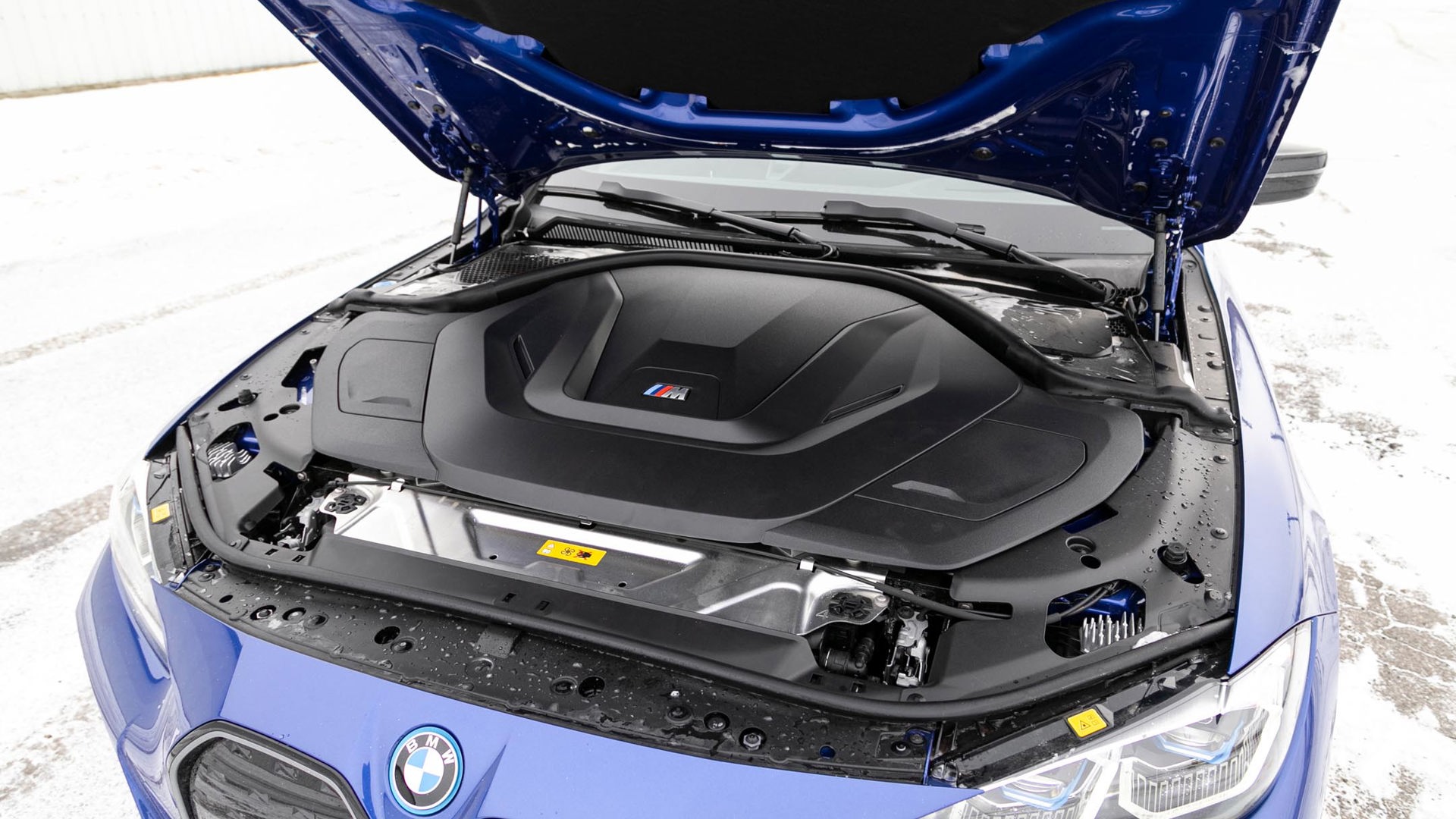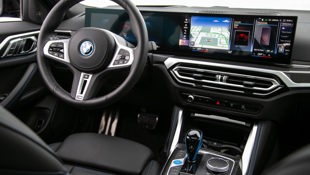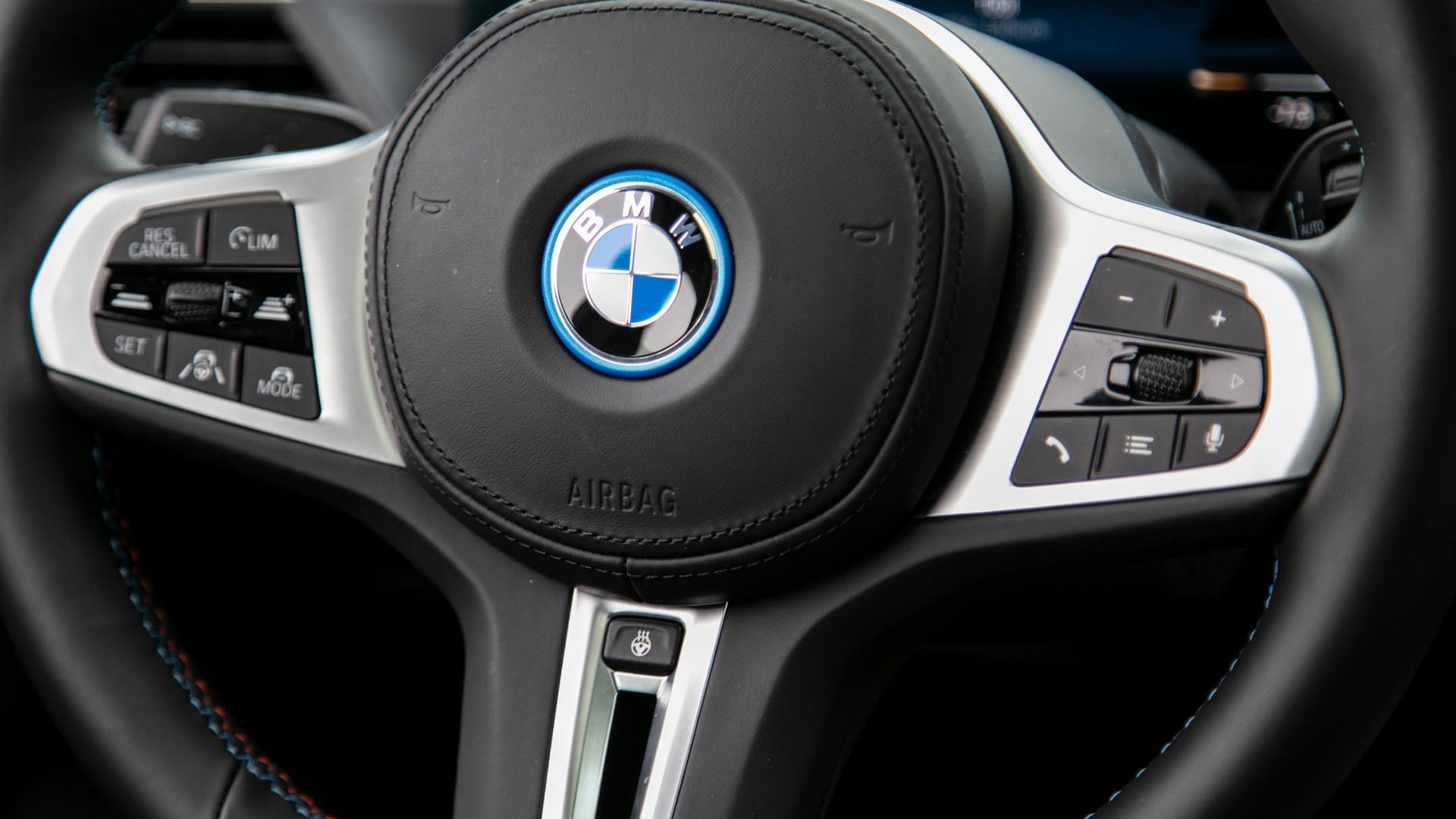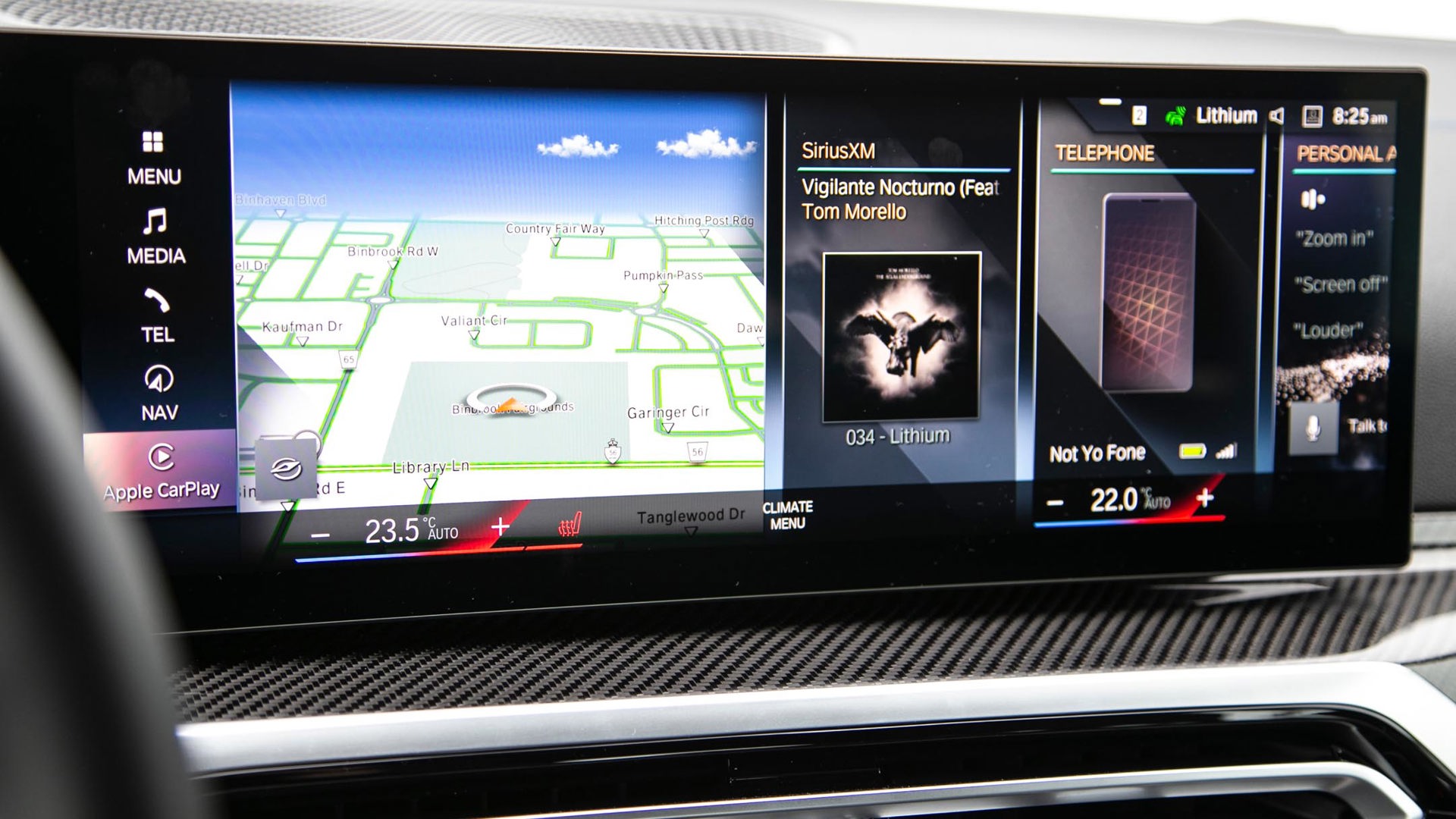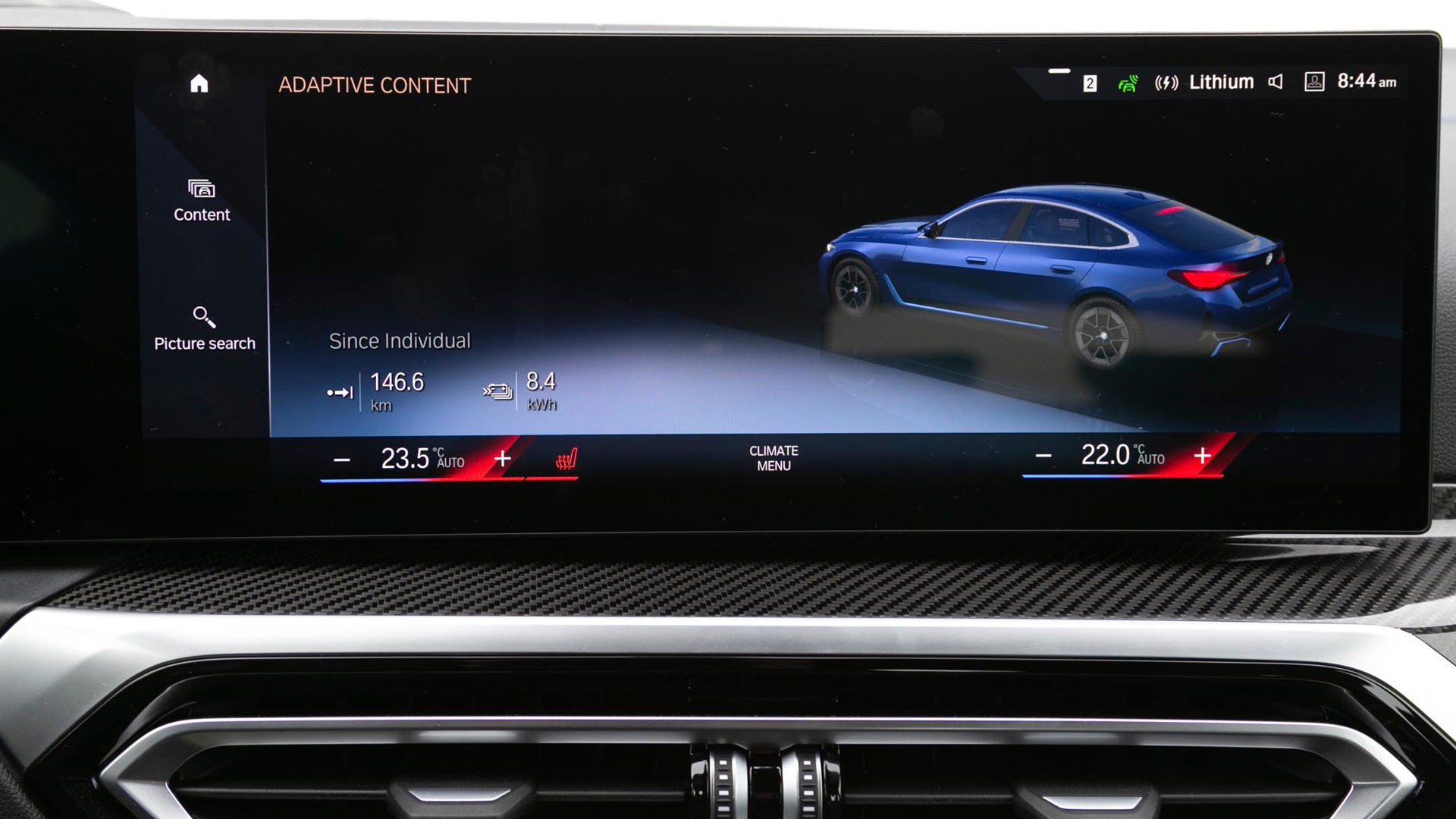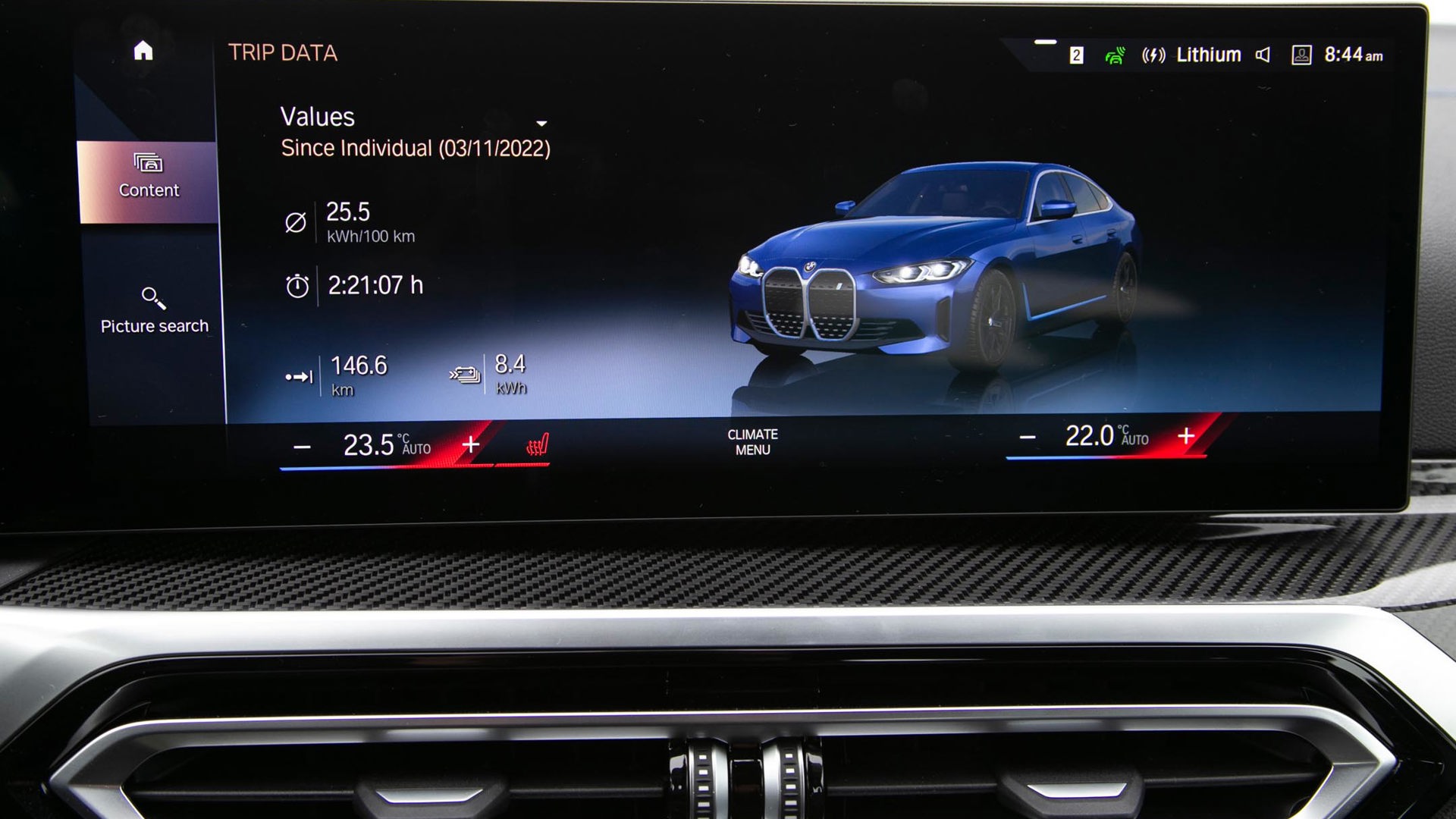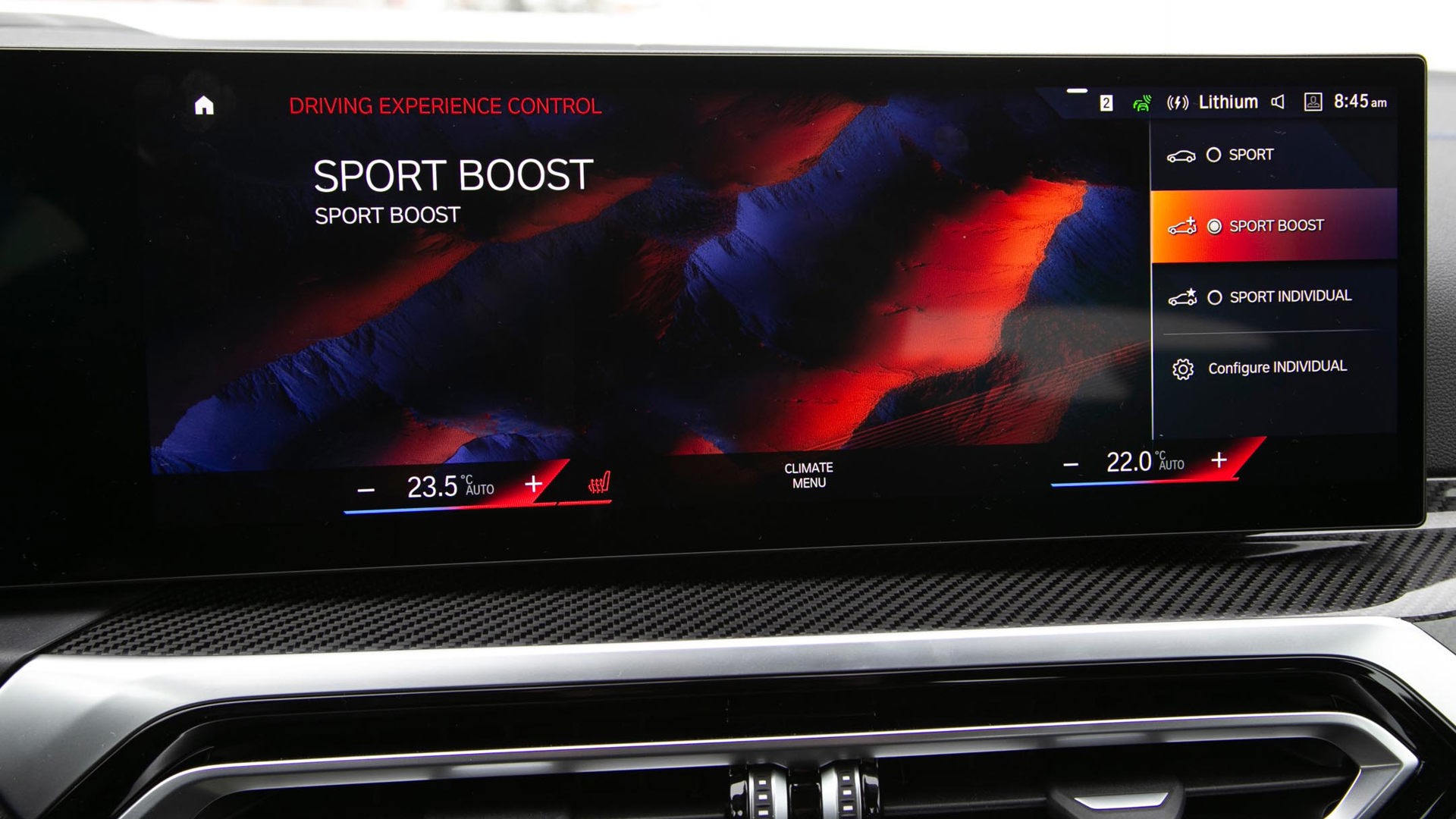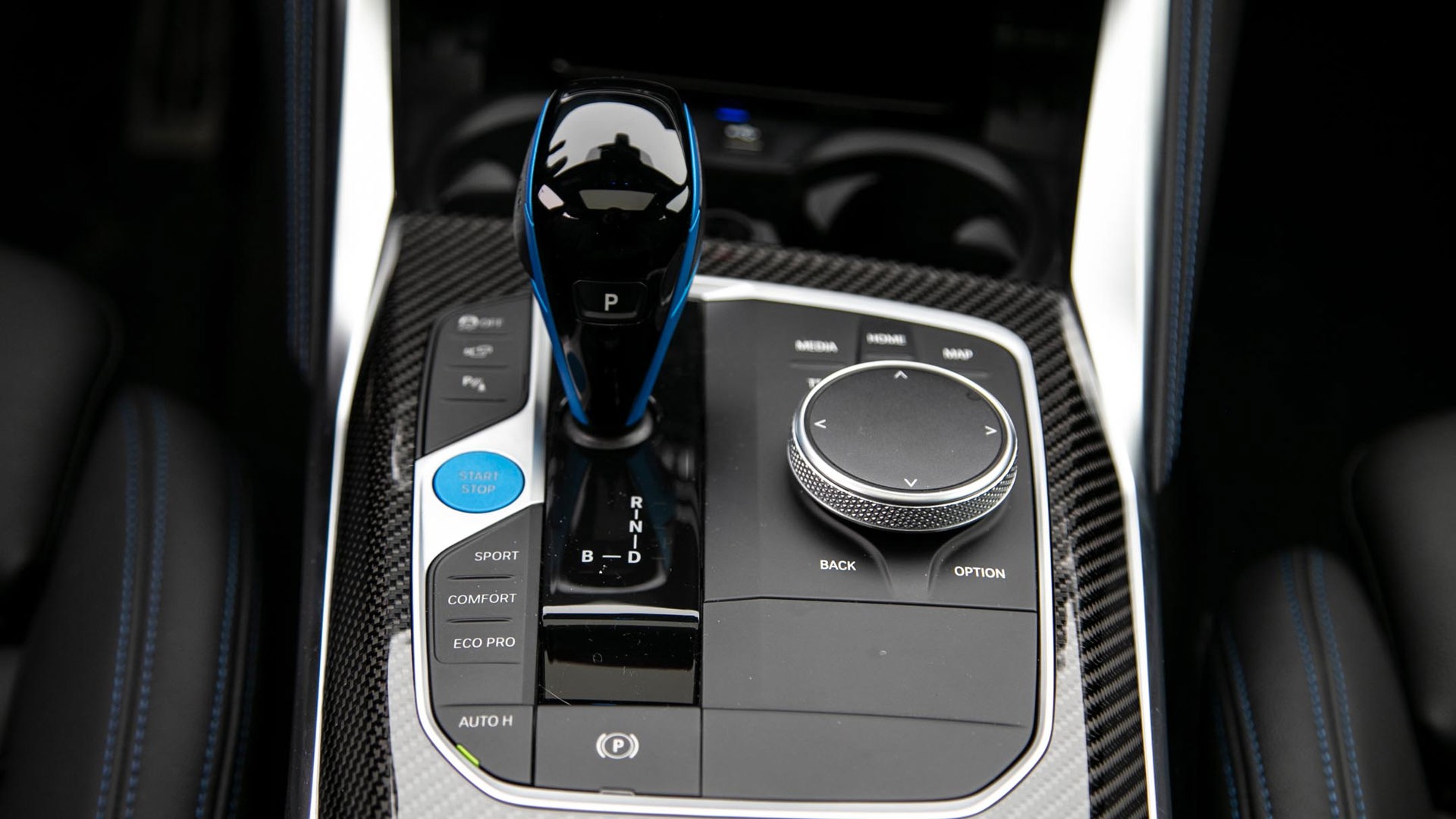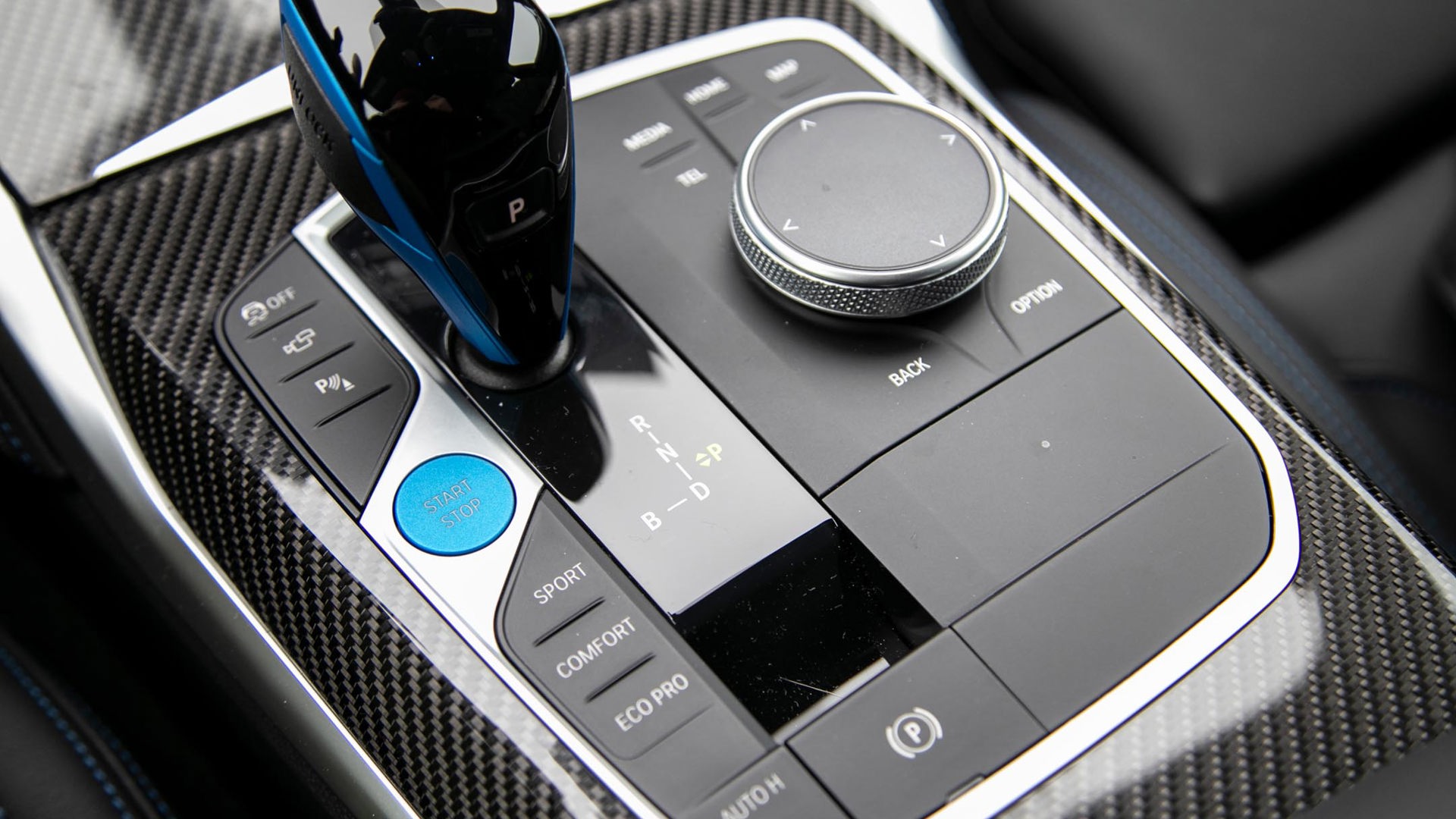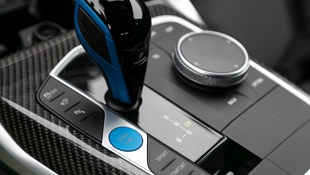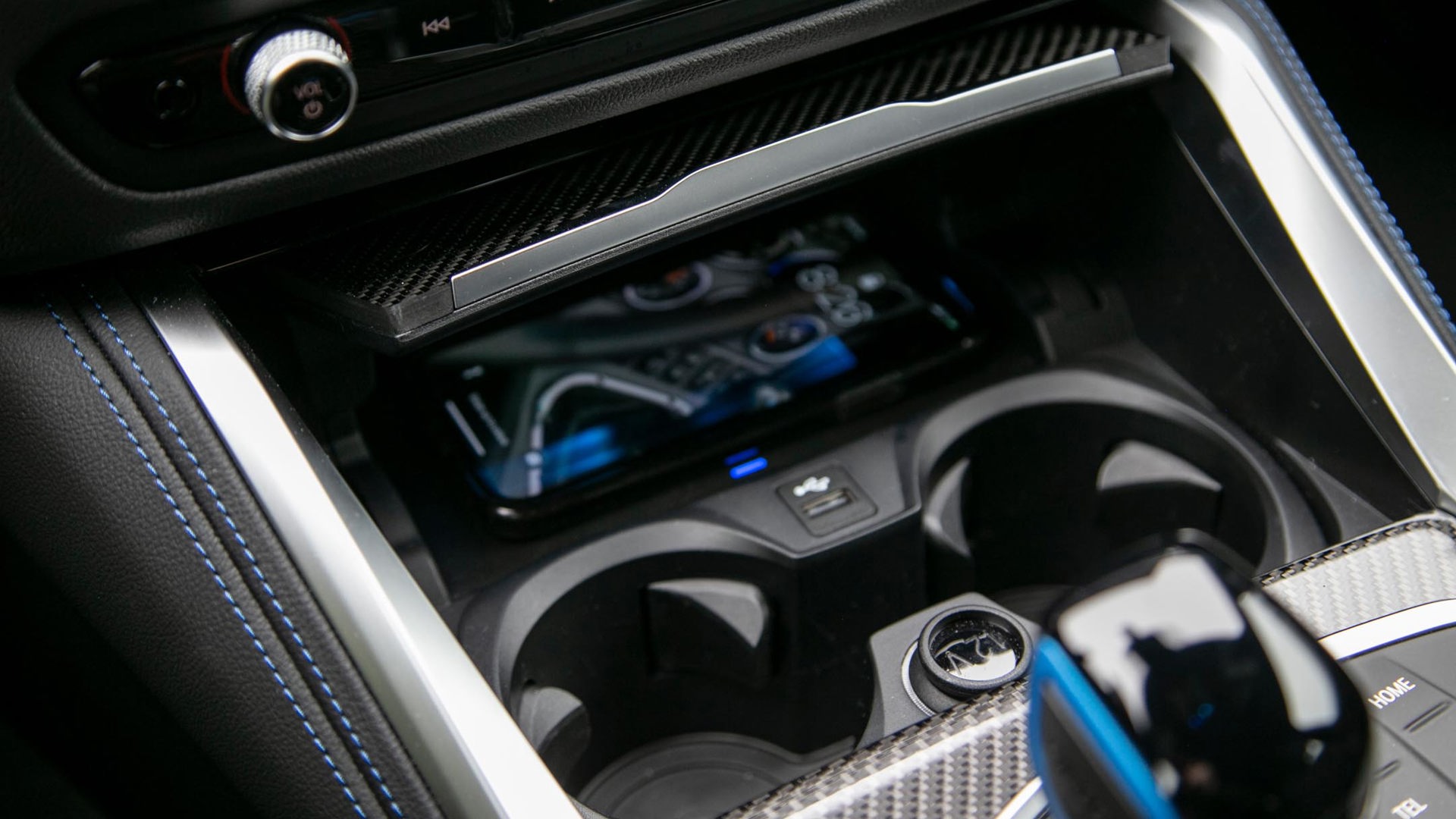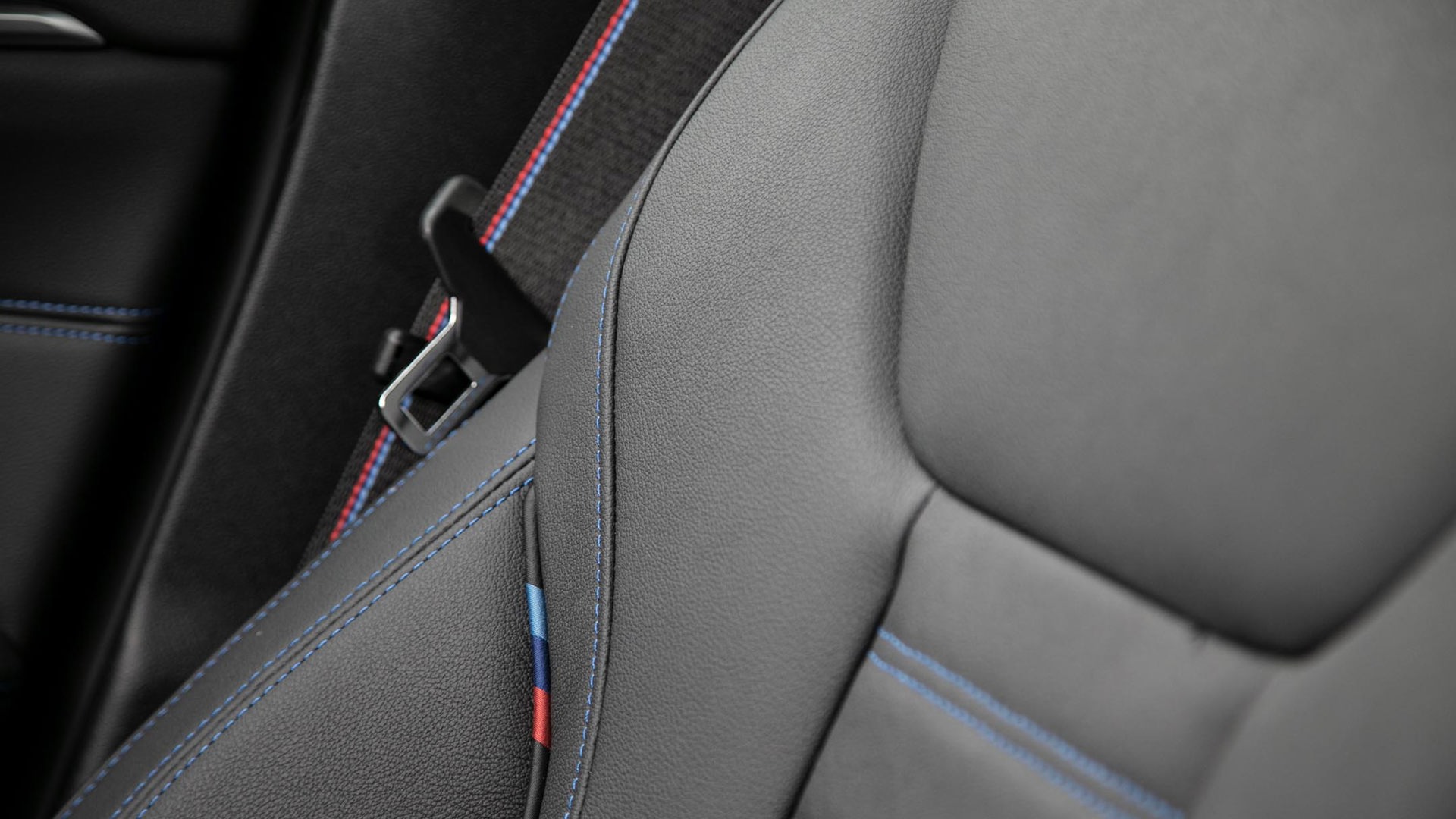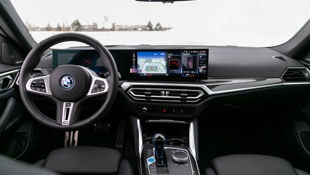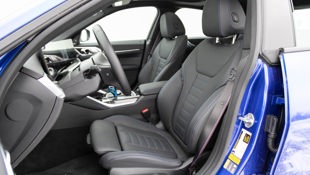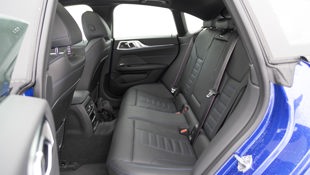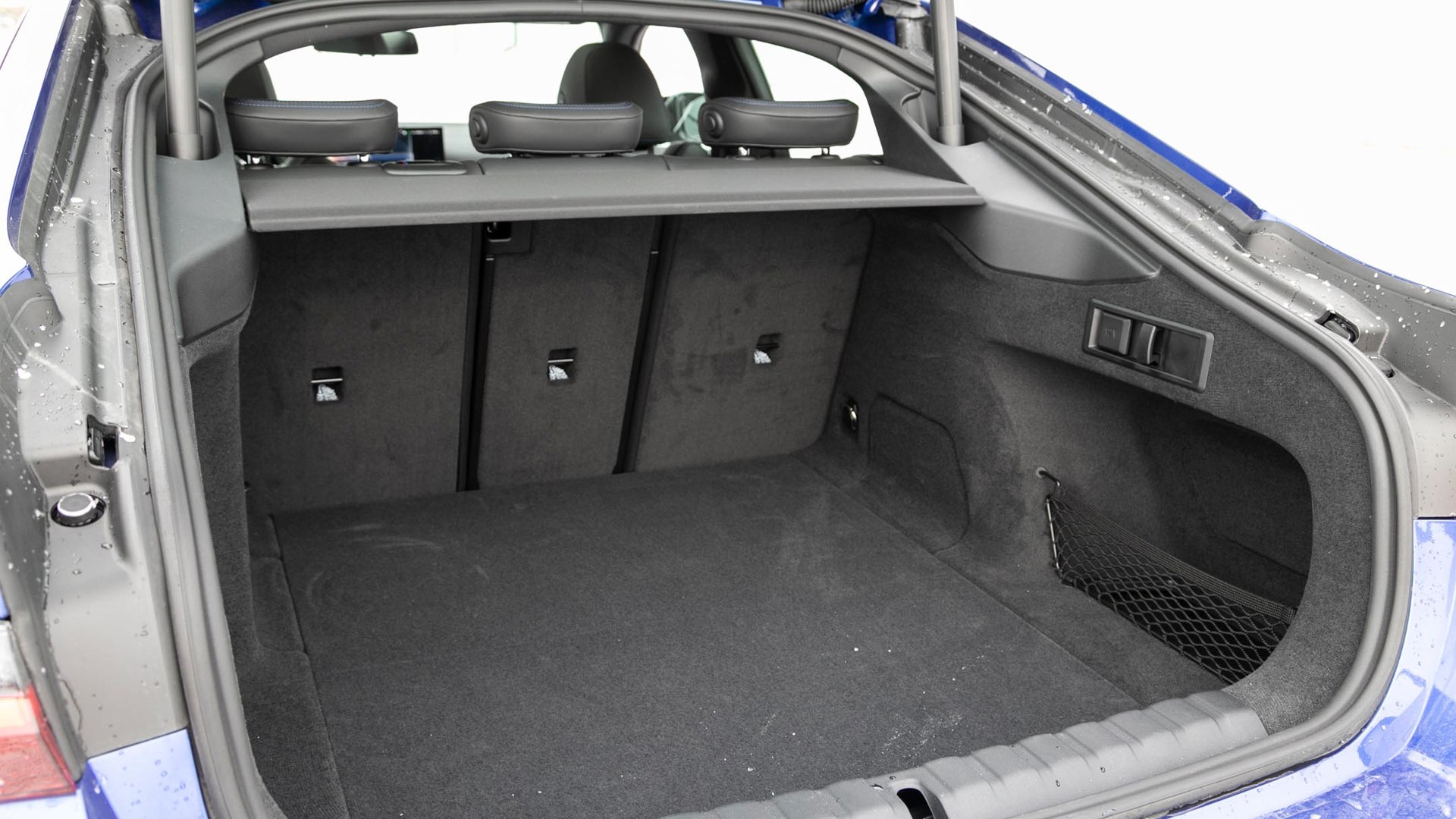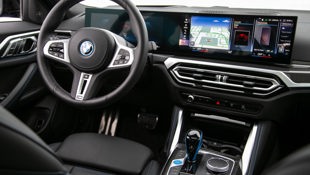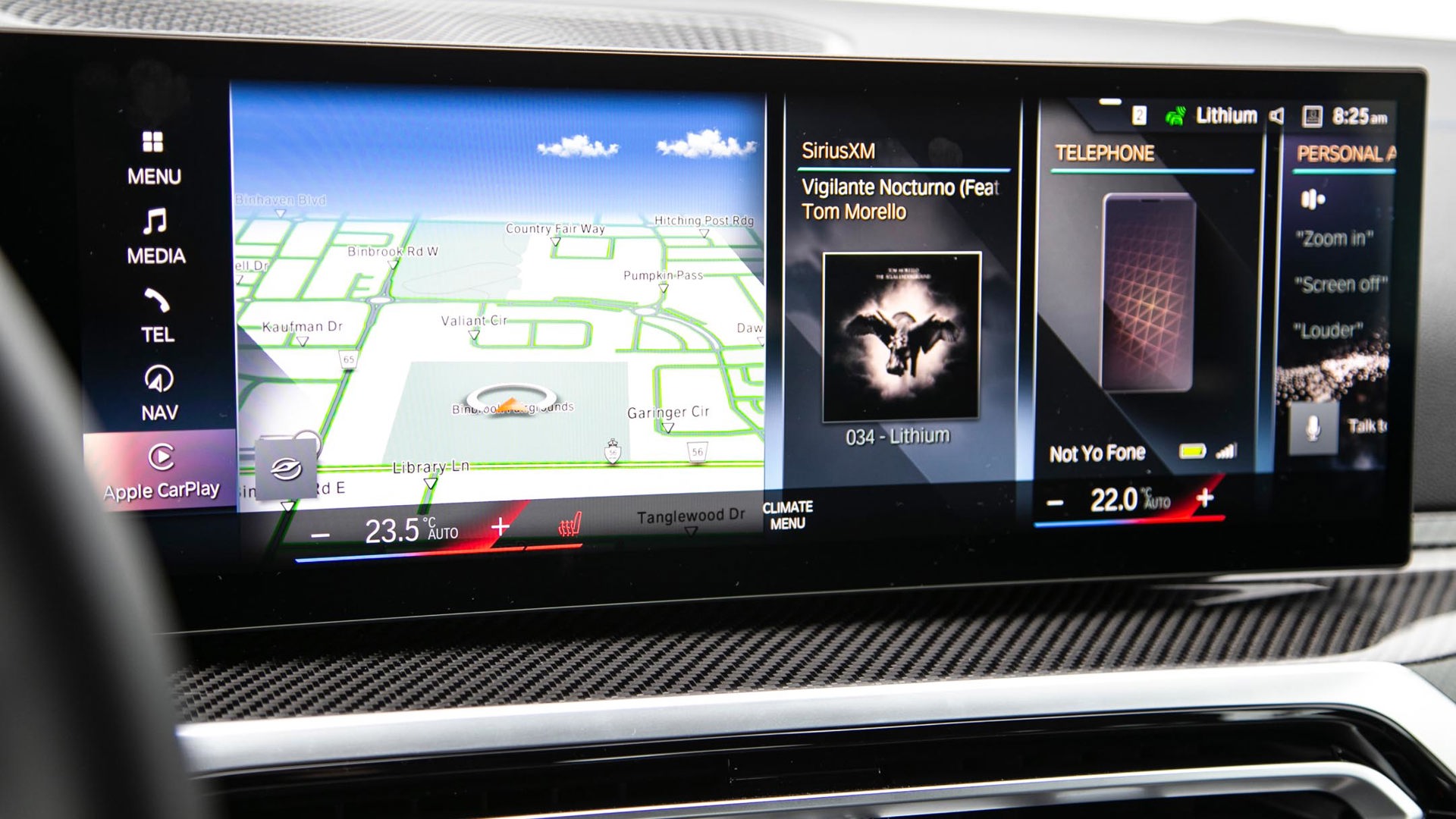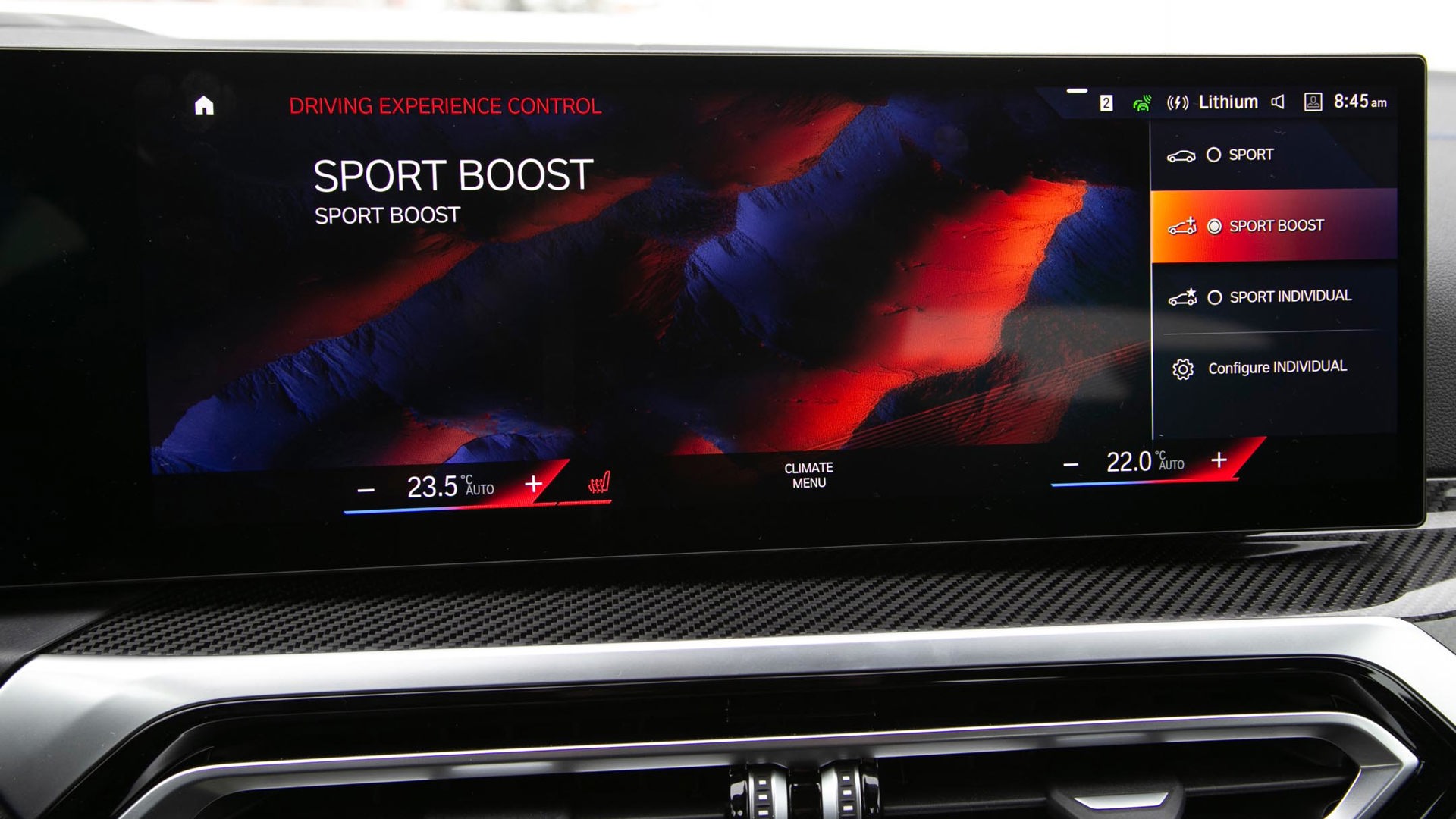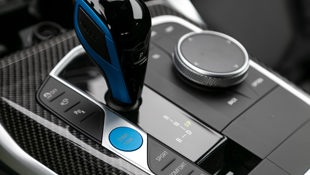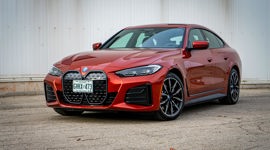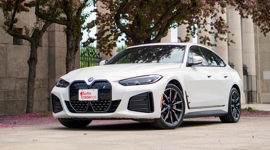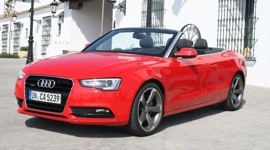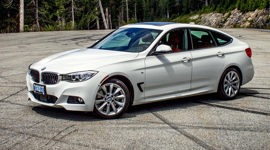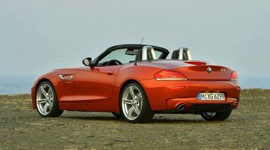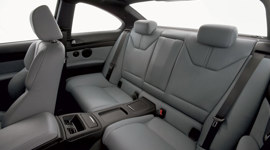 AutoTrader SCORE
AutoTrader SCORE
-
STYLING8/10
-
Safety9/10
-
PRACTICALITY8/10
-
USER-FRIENDLINESS8/10
-
FEATURES7/10
-
POWER10/10
-
COMFORT7/10
-
DRIVING FEEL8/10
-
FUEL ECONOMY9/10
-
VALUE7/10
It couldn’t have timed out any better.
As the news reported fuel costs reaching crippling record-highs across the country, I smugly plugged in the electric car parked in my driveway. That it was painted bright blue, wore a BMW badge, and didn’t look like most EVs made it so much the better.
My expectations were high for the 2022 BMW i4 – especially considering the number of M badges stuck to it. Thankfully, it (mostly) lives up to the hype.
Power: 10/10
Whether filling out customer service surveys or reviewing cars, I almost never give a perfect score. [Oh, we’re aware, Jeff. – Ed.] Perfection is extremely rare, and a car has to exceed my expectations by a large sum in order to be recognized as such. In the case of the BMW i4 M50, it most certainly does in terms of power.
In sport mode, output peaks at 536 hp and 586 lb-ft of torque through two different motors – one powering the front wheels, the other (larger and more powerful one) motivating the rear. Those are impressive numbers on paper, but in reality, the ability to summon that much thrust instantaneously is a bit mind-bending. Launch control makes it possible to reach 100 km/h from a standing start in a claimed 3.9 seconds, which is a bit of a silly figure since BMW is known for sandbagging its official acceleration times. Compressed against the back of my ribcage after a hard stomp of the accelerator, my innards suggest that may be the case here, too.
It’s the sort of power that requires a driver to recalibrate their perspective when driving – a task that’s sometimes trickier than it seems. At one point during my commute, I had been lulled into a bit of complacency as I whirred along in thick, mind-numbing traffic. After growing impatient behind a dawdling SUV, I prodded the go-pedal generously and was truly startled as objects on the horizon grew larger in the windshield in an instant. To describe passing power in the i4 M50 as abundant is a gross understatement.
Driving Feel: 8/10
So it’s quick in a straight line, but then most high-end EVs are. A Tesla Model 3, the i4’s direct nemesis, is wickedly quick, too. But BMW dared to bestow the dual-motor version of its i4 with all those M badges, suggesting it’ll also handle well, and it does – but with an asterisk.
The i4 is exceptionally stable and manages to utilize its all-wheel drive for sensational traction when accelerating out of a corner. Body roll and nose dive are both well-managed thanks to the M50’s adaptive suspension, and the structure – mostly shared with the current gas-powered 4 Series Gran Coupe – is solid.
It’s capable, but the steering is rather numb, and at nearly 2,300 kg (5,071 lb), it’s far from being a featherweight sport sedan. (It’s also notably heavier than the Model 3). The bulk of the i4’s mass comes from its battery pack, which is typical of EVs; and although it resides in the floor, keeping the centre of gravity low, the sheer mass can’t be ignored when hustling through rapid steering transitions.
Still, when not flogging it relentlessly on switchbacks, the i4 is more than capable of being a genuinely fun, sporty machine for daily driving. Just don’t expect the i4 M50 to scare away M3 drivers at the track – unless it’s a drag strip, that is.
Fuel Economy: 9.5/10
Even though the i4’s electric motors are the same as those in the new electric iX SUV, the i4 eDrive40 and M50s get a smaller 80.7-kWh battery pack. Under optimal conditions (that is, not a wickedly cold Canadian winter), the M50 is rated for a range of 435 km. Unsurprisingly, the lighter eDrive40 adds nearly 50 km more, maxing out at 484 km, but think twice before optioning either trim with larger wheels since they can cut upwards of 70 km from those totals.
Real-world winter driving with heated seats and steering wheel on and the HVAC cranked like a blast furnace, plus less efficient winter tires, should result in a significant drop in range; but from a full charge, I managed 120 km and only used 35 per cent of the battery. At that rate, managing close to 400 km should be still possible even for highway driving in the winter.
In fairness, I had spent a lot of time driving in the eco drive mode and with the heaviest regenerative braking setting engaged (enabling one-pedal driving most of the time). Plugged into a home 9.6-kW charger, it should take roughly nine hours to juice up the i4 completely. A DC fast-charger at 150 kW can boost it from 10 per cent to 80 per cent charge in less than half an hour, and it supposedly only takes seven minutes to gain 100 km of range. Those are pretty close to Tesla charging rates, for those keeping score. Plugging into a standard 110-volt household plug isn’t a great idea unless you’ve got half a week to wait.
Styling: 8/10
With a platform and body shape shared with its 4 Series Gran Coupe cousin, the i4 bucks the EV trend of looking like an over-styled spaceship from a cheap 1980s sci-fi flick. Its five-door fastback profile is purposeful, and it’s clearly a BMW – from its short overhangs front and rear, to the subtle Hofmeister kink in the C-pillar.
Up front, observers will notice the i4 has a solid façade that resembles the new 4 Series style grille (for better or for worse), but those with keen eyes will see the BMW logos surrounded by blue rings; otherwise there’s very little to broadcast that this is an electric car.
For buyers looking to show off that they’re saving the planet, the i4’s traditional styling may not be overt enough, but for the rest of us, it’s a welcome change. And even though it isn’t shaped like a half-melted Easter treat, the i4 still reportedly manages a .24 drag coefficient.
Inside, the interior is a definitively contemporary BMW, which may help those on the fence about an EV become more comfortable with making the switch. There’s a lot of familiarity with this car, and the current-gen 3- and 4 Series with steering wheel controls and centre console touch points are virtually the same. The only real departure from the cockpit’s clean, flowing lines is the enormous, incongruous glass panel in front of the driver that houses two widescreen displays.
User Friendliness: 8/10
While the latest infotainment displays may look a bit like an afterthought, the system works very well. The primary central screen can be configured with a series of widgets to display the driver’s preferred key information, or it can be put directly in front of the driver in the gauge display (or even in the head-up projection). The central display has touchscreen functionality as well as the traditional touch pad and rotary dial controls, too. There’s wireless smartphone connectivity, and it worked seamlessly during the test – no small feat given my antiquated iPhone.
The rest of the ergonomics are fairly straightforward except for the climate controls, which have now been integrated into the display. Still, they worked smoothly, even with gloved fingers.
Comfort: 7.5/10
Besides the fuel they save, one of the most enjoyable aspects of driving an EV is the silence, and BMW has made the i4 even quieter than most. There’s no perceptible motor whine, and both wind and road noise are very well hushed, making enjoying the excellent sound system even easier.
While some sporty BMWs suffer from abusively harsh ride quality, the i4 manages to feel firm yet insulates occupants from most bumps and road imperfections. Plus, the i4s considerable weight helps give the car an overall planted feel that smaller, lighter cars usually lack.
The front seats are like those found in other BMWs: very well bolstered for sporty cornering, and trimmed with taut leather. They can feel a bit hard, but even after a few hours behind the wheel, they continue to offer good support and comfort. There’s sufficient room up front for driver and passenger, and while rear-seat legroom is abundant, headroom is compromised somewhat by the sloping roofline. Dimensionally, it’s similar to the Model 3, but the Tesla offers a bit more passenger space in every measure.
One downside to sharing the gas-powered 4 Series platform is the intrusion of the centre driveshaft tunnel despite the i4’s lack of a driveshaft. It forces the rear middle seat passenger to sit with splayed legs – a problem that doesn’t afflict the flat-floored Tesla.
Practicality: 8/10
Despite lousy weather during my time with the i4, it never felt compromised for all-season use. With a good set of winter tires fitted, the all-wheel drive system helps traction even in snow and ice. It’s spacious enough to offer the same passenger room as many mid-size crossovers, and will seat up to five. The rear tailgate creates an expansive opening to aid loading and unloading of the sizable cargo hold, plus the rear seats split and fold forward.
Unfortunately, unlike some other EVs, there’s no additional front cargo hold where the engine would normally reside, where instead BMW has covered the electric motor and componentry with a large plastic shroud.
Features: 7/10
Optioned up with leather seats stitched in contrasting blue thread, the i4’s interior is well-equipped. Beyond the onboard navigation and premium sound system, there’s a sunroof (albeit not a panoramic one) and all the driver aids one expects to find these days, including parking sensors and a bird’s eye view from cameras positioned around the car. Still, heated rear seats and ventilated front ones are available but weren’t optioned on my tester.
Safety: 9/10
While the i4 is too new to have been evaluated by the United States National Highway Traffic Safety Administration (NHTSA) or not-for-profit Insurance Institute for Highway Safety (IIHS), it’s well equipped with both passive and active safety features like automated emergency braking, lane-keeping assist, blind-spot warnings, and parking aids, plus adaptive high-beam control and BMW’s laser-light headlights.
Value: 7/10
At nearly $73,000 to start, the i4 M50 isn’t a cheap car, but it measures up favourably against the Tesla Model 3, splitting the cost between the Long Range and Performance variants. Typical of BMW, option packages are required to add in a number of key features one might expect as standard on such an expensive car, with my tester ringing in at just shy of $90,000 with options and destination charge factored in. Still, EVs are costly as the technology is still expensive to develop and implement, and buyers looking for a more affordable i4 can opt for an eDrive40 that starts at $54,990.
The Verdict
Tesla’s Model 3 has been a phenomenal success, and the roads around the Greater Toronto Area are littered with them. With the i4, BMW offers a legitimate competitor to the smallest Tesla that includes all the benefits of an electric car without having to look like one. It’s practical for daily use year-round, offers scintillating straight-line performance, and should make it easy for buyers to make the switch to a full EV.
| Engine Displacement | Dual Electric Motors |
|---|---|
| Engine Cylinders | n/a |
| Peak Horsepower | 536 hp |
| Peak Torque | 586 lb-ft |
| Fuel Economy | 2.5 / 2.4 / 2.5 Le/100 km, 22.3 / 21.4 / 21.9 kWh/100 km cty/hwy/cmb; km range |
| Cargo Space | 470 / 1,290 L seats down |
| Model Tested | 2022 BMW i4 M50 xDrive |
| Base Price | $72,990 |
| A/C Tax | $100 |
| Destination Fee | $2,480 |
| Price as Tested | $89,615 |
|
Optional Equipment
$14,045 – Premium Enhanced Package, $5,750; Advanced Driver Assistance Package, $2,000; BMW Laserlight Headlights, $1,500; Leather Interior, $1,500; Metallic Paint, $895; Carbon Fibre Trim, $600; 19-inch Bicolour Wheels, $500; M Seatbelts, $400; Wireless Charging, $350; High-Gloss Black Exterior, $350; Lumbar Support, $200)
|
|
